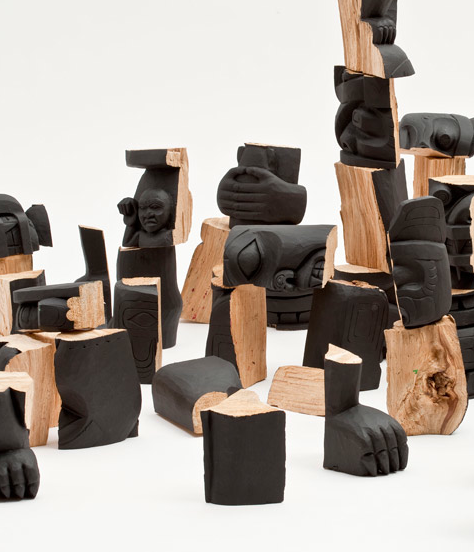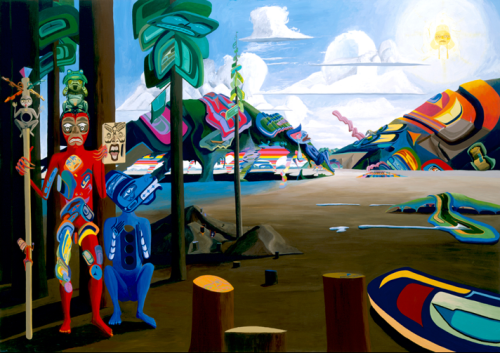video work by Nicholas Galanin: Tsu Heidei Shugaxtutaan 1
Nicholas Galanin: I Think it Goes Like This?
Terrance Houle: Urban Indian Series (2004),
Nadia Myre, Indian Act
Indian Act speaks of the realities of colonization - the effects of contact, and its often-broken and untranslated contracts. The piece consists of all 56 pages of the Canadian Federal Government’s Indian Act mounted on stroud cloth and sewn over with red and white glass beads. Each word is replaced with white beads sewn into the document; the red beads replace the negative space.
Sick and Tired was shown as part of Witnessess: Art and Canada’s Indian Residential Schools.
Corey Bulpitt and Gurl 23
More from Nicholas Galanin
1. Get Comfortable
2. Things Are Looking Native, Native’s Looking Whiter
3-4. Imaginary Indian
5. Inert
video work by Nicholas Galanin, for Beat Nation
When people talk about the changing face of Inuit art they often reference the work of Jutai Toonoo, the 53-year-old Cape Dorset artist who has staked out new territory in the landscape of contemporary Inuit art. “I’ve always had this fascination with faces,” he said in a 2011 interview, adding that Inuit artists often “do the same things—animals, things from the past, igloos.” Increasingly, though, Cape Dorset artists like Toonoo, Shuvinai Ashoona and Annie Pootoogook are breaking that mould, picturing the social changes that are taking place in Inuit society, documenting the impact of mental illness, substance abuse and violence with harrowing honesty. Toonoo, though, is distinctive in exploring the psychological impact on the individual, making large-scale portraits of himself and others that surge with intensity and complex feelings, charged with the artist’s distinctive, feverish touch. These are particular selfs, not generic figures (the brave hunter, the industrious mother etc.).Ivia read more via bordercrossings mag










































No comments:
Post a Comment